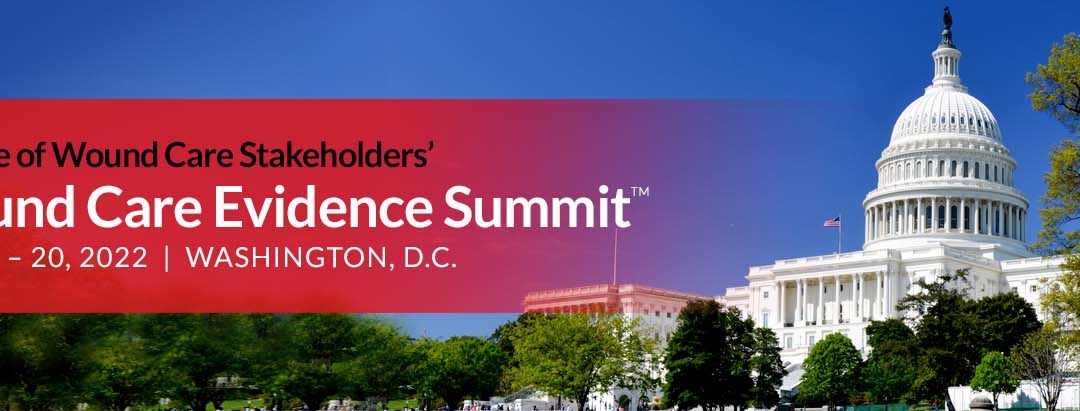It’s nearly here. The 2022 Wound Care Evidence Summit will be held in Washington, D.C. (yes, in person) May 19-20. I have been waiting for more than two decades for an event like this. Ever since I put the first “skin substitute” on a patient in 1998 – after being one of the principal investigators of the clinical trial. I healed a difficult case and was celebrating what felt like a milestone scientifically and medically – until I discovered that I had breached Medicare coverage policy in my region because my patient was too sick to qualify for a “skin substitute”. My regional Medicare contractor had taken the exclusion criteria of the prospective clinical trial and written coverage policy around it. My patient wasn’t healing in part because she was on prednisone for her rheumatoid arthritis. That’s why she needed an advanced medical treatment – and also why she couldn’t have it.
In 1998 I’d had to put an ad in the Houston newspapers (life before the Internet!) to find patients with chronic ulcers who were healthy enough to participate in the clinical trials of these exciting new treatments. My actual (“real world”) patients were too sick to be enrolled as subjects. I didn’t understand the downstream implications of enrolling only the healthiest subjects in clinical trials. It meant that only the healthiest patients would ever get access to them. Ultimately, the patients who most needed innovative treatments would specifically to be denied access to them. For more than two decades I’ve been on a crusade to find a solution.
We are finally talking about healthcare inequities. However, it’s not just that patients with certain socioeconomic or racial characteristics are denied access to treatment – patients with certain kinds of comorbid diseases are also denied access. And the reason is not bias on the part of clinicians, it’s bias in the design of clinical trials and the payer coverage policy that evolves from clinical design.
I’m proud to serve as a speaker at the upcoming Wound Care Evidence Summit. Rarely have clinicians, researchers and manufacturers had the opportunity to discuss evidence and coverage issues face-to-face with payers, together with Federal regulators & policymakers – at the same time and around the same table. The Summit (May 19-20) offers this unprecedented opportunity. If you haven’t made plans to attend, there are still a few seats left. You can register for the event here.

Dr. Fife is a world renowned wound care physician dedicated to improving patient outcomes through quality driven care. Please visit my blog at CarolineFifeMD.com and my Youtube channel at https://www.youtube.com/c/carolinefifemd/videos
The opinions, comments, and content expressed or implied in my statements are solely my own and do not necessarily reflect the position or views of Intellicure or any of the boards on which I serve.




We really need something similar in the Uk as our ‘system’ is not working.